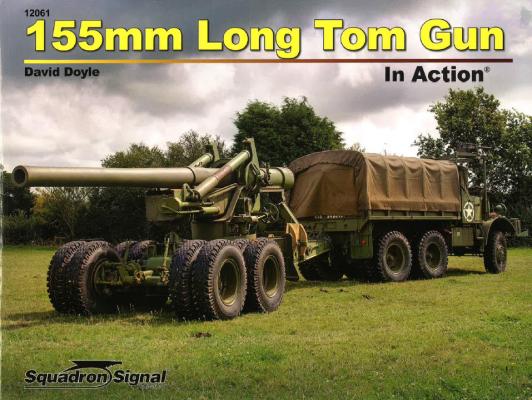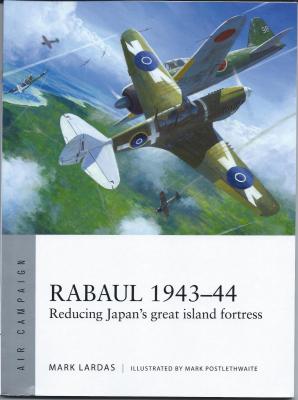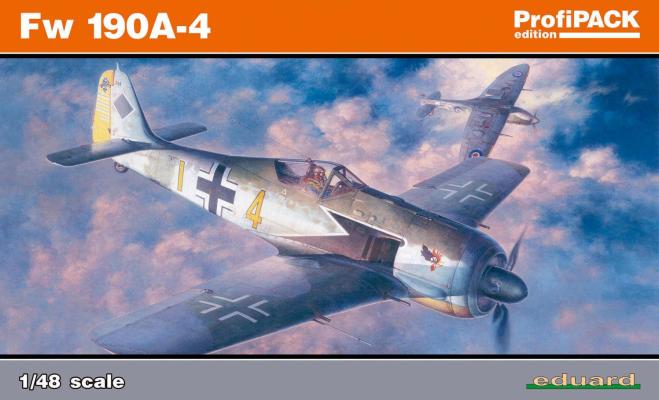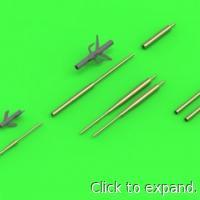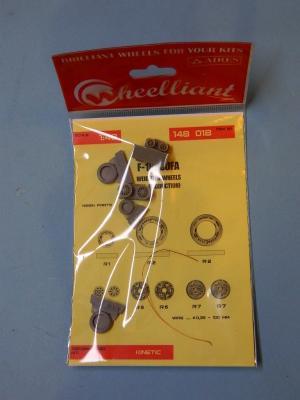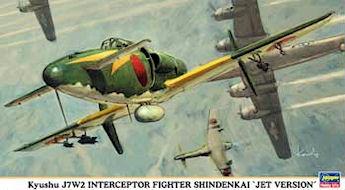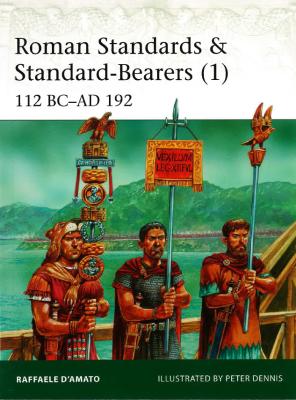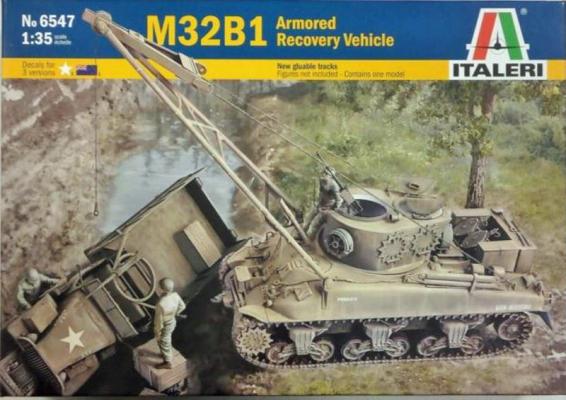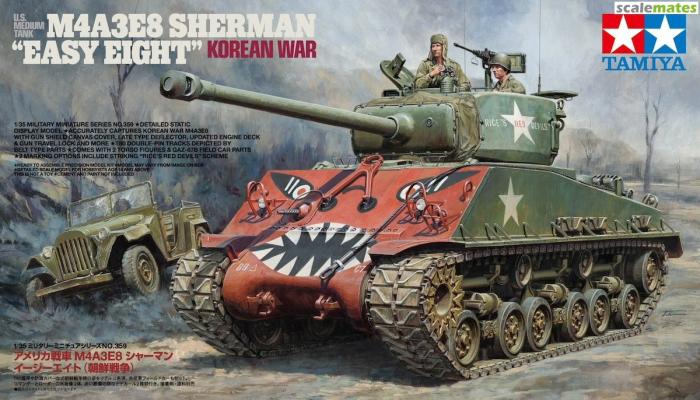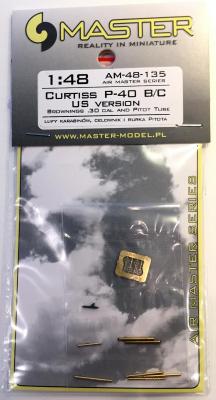After many years of being published in enthusiast publications focused on military vehicle restorations, David Doyle ‘graduated’ to full-fledged books in 2003. His first book was a hefty 512 page history of US military vehicles. He has now had more than 100 books published in military vehicles, aviation and naval topics. David and his wife Denise have amassed a collection of ten Vietnam era military vehicles that still displays at shows. In June 2015, was honored with the Military Vehicle Preservation Association’s Bart Vanderveen Award, given in recognition of "...the individual who has contributed the most to the historic preservation of military vehicles worldwide." Be sure to check out David’s website at www.DavidDoyleBooks.com where you can see and buy at a discounted price off of MSRP all his books that are still available.
What's New
This book is the second in a new series covering major air campaigns in history. This book covers the fight against the Japanese held island stronghold of Rabaul. This island fortress was blocking the allied advance to Tokyo, Home to around 100,000 troops and numerous airfields it was felt that even an all-out assault would not lead to the taking of the island. Thus the Allies began a campaign of aerial assault adding in the use of naval and land forces to reduce the ability of Rabaul to play an important part in the war. This campaign became the blueprint for further combat in the Pacific, showing that it was not necessary to occupy the island to control it.
The book is broken down into 9 sections. The introduction discusses in brief the strategic importance of Rabaul and all the reasons it was such a natural and important base for the Japanese in WWII>
No one can accuse Eduard of not listening to their critics. First the redid their Bf-109s and now they have started to redo their FW-190 series. The first Focke Wulfs that Eduard released were complicated and over engineered for most modelers. They contained a lot of great detail but the fit was fiddly and could confound some modelers. Well all that has changed with the release of the FW-190A-4.
Contents Description
The subject set includes several turned brass pitot tube parts, resin vanes and two 30mm gun barrels for the Su-17, Su-20, Su-22 (Fitter), plus the secondary pitot tubes (optional parts for all versions).
I contacted Master to confirm what material was used for the vanes and is their response: "This material is a resin, but not casting resin. This part is a direct 3D print, so it is UV cured resin used in 3D DLP printers. This material is very similar (chemically and structurally) to Plexiglass (PMMA). It can be easily join using CA glue. The problem is that this material is quite fragile, so we intended to use flexible type of UV resin, so it is not so easy to brake. Of course when it happened our customer service will replace broken parts for free. Piotr Czerkasow "
IPMS/USA thanks the crew at Aires for supporting the IPMS USA reviewer corps with one more of many monthly releases, In this case another example of CAD-assisted resin wheel and tire assembly. This is a useful and timely landing gear addition in the ever-growing detail world for the sufferers of Advanced Detail Syndrome like me. And thanks to IPMS leadership for sending it my way to be reviewed.
This review is of the Aires/Wheeliant F-16I Sufa’s wheel and tire set. It is truly an improvement over the basic kit items, as a mere glance at the photos can show. The one really noticeable bit is the writing on the tire sides (“Goodyear”), and the deep, scale tire grooves of the “heavy” landing gear rubber. Be aware that 148018 is the set for Kinetic’s Sufa, and 148016 is the Hasegawa version. There are differenced in the axle arrangement, etc.
Hasegawa has reissued an old friend in the form of a 1/48th scale J7W2 (Jet Version) Interceptor Fighter. The J7W2 was a natural follow-on to the prop-driven J7W1 kit which was released quite some time ago. While the J7W1 prototypes actually flew short test flights for a total time of just under an hour, the J7W2 never got off the drawing board. The Info-Paragraph on the Hasegawa website states that, “It took its first flight on August 3rd, 1945”, but that comment refers to the J7W1 prop-driven aircraft. The only J7W1 left in existence is in the Smithsonian collection, and the J7W2 was never actualized. Within the kit instructions, the issue of whether the jet version ever flew is correctly put forward with a statement that reads, “The IJN, encouraged by the previous success of its propeller-driven Shinden prototype, had plans to build a jet-powered Shinden Kai, but historians have been able to ascertain exactly how far along this project was at war’s end.”
Dr Raffaele D'Amato is an experienced researcher of the ancient and medieval military worlds. After achieving his first PhD in Romano-Byzantine Law, and having collaborated with the University of Athens, he gained a second doctorate in Roman military archaeology. He currently works in Istanbul at the Fatih University as visiting Professor for the TUBITAK (Turkish Government Research Institution) on a project linked to the arms and armour of Rome and Byzantium. He has authored or co-authored over a dozen books for Osprey.
Born in 1950, Peter Dennis is an accomplished illustrator having contributed hundreds of books, including many Osprey Publishing titles. Peter studied at the Liverpool Art College and has been working as a professional artist and illustrator since 1991. Peter Dennis is also afflicted with the modeling bug and is a keen war-gamer terrorizing other war-gaming aficionados near Snowdonia Nation Park in North Wales.
The Italeri M32B-1 Armored Recovery Vehicle (ARV) Kit # 6547, originally released way back in 1980, was, at the time of release, still standing sentry duty as the only readily available injection-molded set of sprues for this Sherman-based Allied tank recovery vehicle. The model has gone through a number of updates and improvements since, culminating in what you see reviewed here. After all this time, however, Italeri’s offering ‘still has it goin’ on’, sporting a relatively detailed interior and winch/cable assembly; all housed in a decent Sherman chassis. As boxed, this kit is one heck of a value.
Summary
Tamiya has enhanced their recently released M4A3E8 Sherman to represent the Korean War variant, including the colorful ‘Devil’ scheme. Several new sprues, new track, decals, and other odds and ends round out the new offering, including a complete, 2-sprue complementary kit of the Russian GAZ67B Field Car equivalent of the Willys Jeep. One thing is for sure – the kit this new version is based on is one of the finest armor models ever produced by Tamiya. And that is saying quite a lot – for just a pure, modeling experience, it just doesn’t get any better.
Airfix’s new 1/48 early P-40 models have been very popular with modelers of late. Despite these being very good kits, there is always need for some improvement. Master Model’s recent product address some of those needs.
Master has come out with aftermarket sets that replace Airfix’s gun barrels and pitot tubes, as well as furnishing ring and bead sights that are missing from the original kit. There are separate Master packages for the American and British boxings, with appropriate changes in the pitot tubes and gun barrels.
IPMS and Master were kind enough to allow me to review the ‘US version’ of this set. It is comprised of the following brass pieces: four 0.30 cal gun barrels, two blast tubes for the nose guns, a 2-piece pitot tube (brass + resin), a bead sight, and a photoetch brass fret of ring sights.

